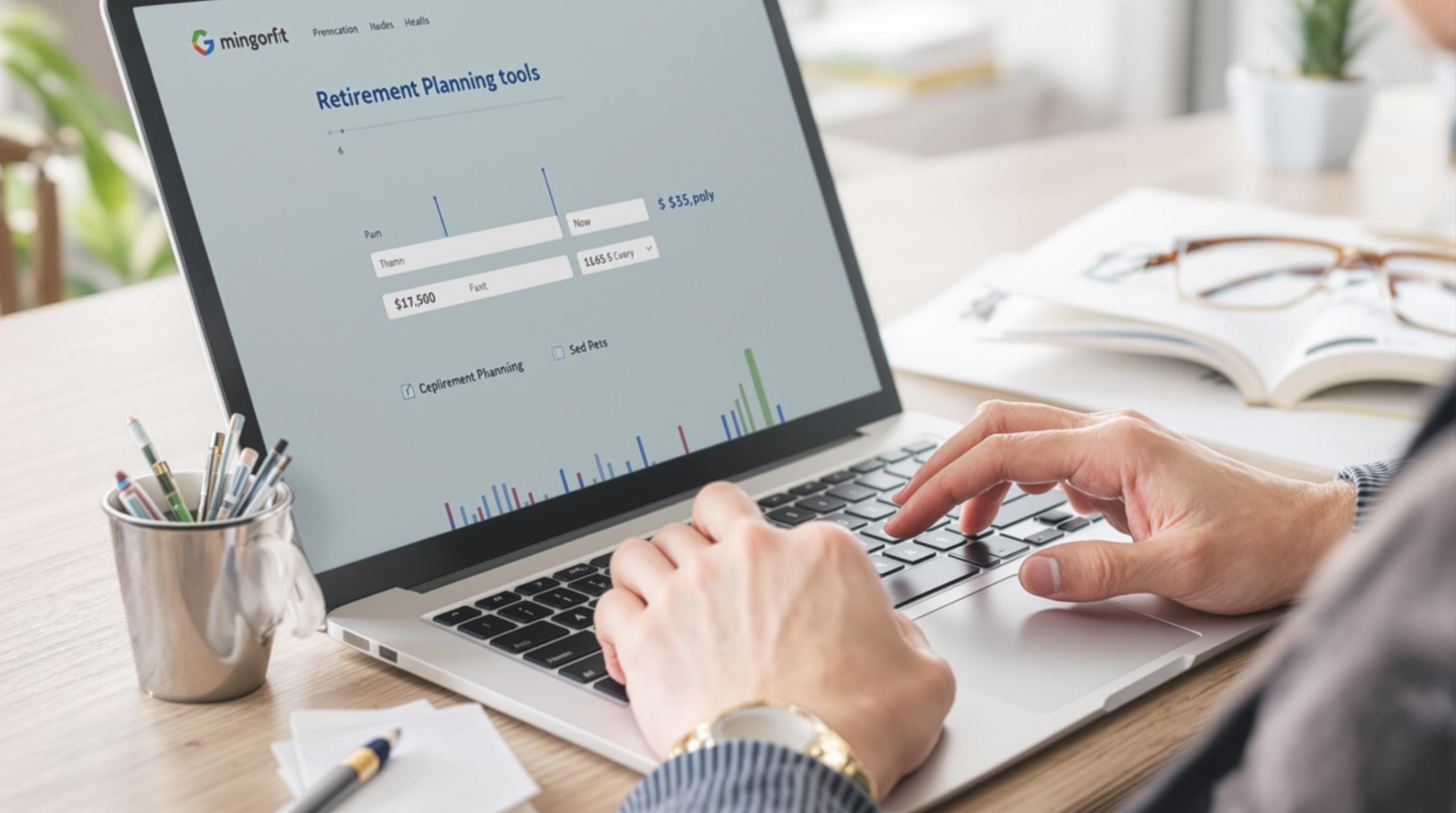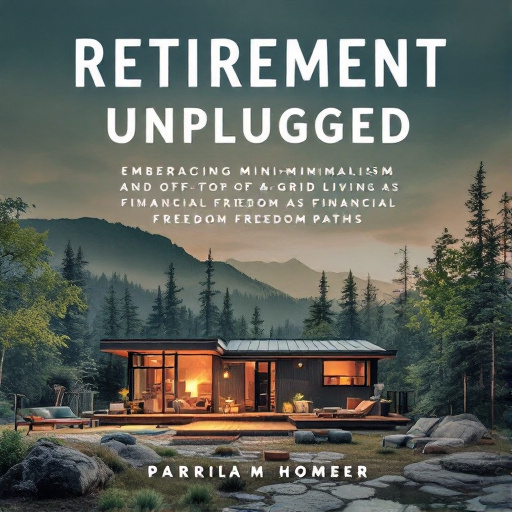Featured Articles
- "Beyond Savings: How Gardening and Hobbies Can Transform Your Retirement Plans"
- Reimagining Retirement: How Virtual Reality Could Transform Senior Living and Financial Independence
- "Rethinking Retirement: How Eco-Friendly Living Is Shaping Future Financial Planning"
- Retire in Style: Exploring the Rise of Sustainable Living Communities for Seniors
- "Retirement Reimagined: How Eco-Conscious Living is Shaping Future Financial Landscapes"
"Retirement Unplugged: Embracing Minimalism and Off-the-Grid Living as Financial Freedom Paths"
"Retirement Unplugged: Embracing Minimalism and Off-the-Grid Living as Financial Freedom Paths"
The path to financial freedom in retirement can take many forms, and two increasingly popular choices are embracing minimalism and off-the-grid living. This article explores how these alternatives can provide both economic relief and a deeper sense of fulfillment by shedding the burdens of consumerism and conventional living.
The Allure of Minimalism
Imagine waking up every morning in a space free from the clutter of excessive belongings, each item in your home having a purpose. Minimalism isn't just a design choice; it's a mindset. According to a study by the National Institute on Drug Abuse, decluttering and simplifying one's living environment can significantly boost mental health, providing a serene atmosphere that fosters creativity and productivity. For many retirees, this can mean a simpler life—one that prioritizes experiences over possessions.
The Costs of Consumerism
At a recent financial conference, a surprising statistic was presented: over 90% of retirees express regret over their spending habits during their working years. The irony? Most of this spending was on items that lost value or brought fleeting joy. Think about it—how many times have we purchased the latest gadget only to have it sit unused a year later? By adopting a minimalist lifestyle, retirees can cut costs drastically, focusing instead on quality over quantity.
Financial Freedom 101
Financial freedom isn’t merely a destination, but a journey. The concept is about creating space in your life for what truly matters—be it spending time with loved ones, pursuing hobbies, or even traveling. A 2019 report by Charles Schwab indicated that 45% of Americans feel overwhelmed by financial stress, with retirement being a significant contributor. Embracing minimalism can alleviate some of this burden, allowing retirees to allocate resources towards what genuinely enriches their lives.
A Case Study in Simple Living
Meet Janet, a 62-year-old retiree who made the leap into minimalism after years of overwork and consumerism. While her peers were focusing on accumulating wealth to fund lavish lifestyles, Janet sold her suburban home, downsized to a small studio apartment, and channeled her savings into travel and volunteering. "I’ve never felt freer," Janet says, "and I can do things that matter the most to me instead of just worrying about bills." Her story is a testament to the power of choosing a simpler life.
Downsizing Your Space, Upsizing Your Life
Downsizing doesn't merely apply to living spaces; it can extend to one's possessions, financial commitments, and even social obligations. By shedding these layers, retirees often find they have more time and energy to engage in activities they love. A study from the American Institute of Stress noted that over 70% of retirees who downsized report higher levels of satisfaction with their day-to-day lives.
Seeking Solitude: The Off-Grid Movement
Now, let's step outside of conventional living altogether—into the world of off-grid living. This lifestyle is rooted in self-sufficiency, where individuals live independently from the traditional utilities and systems. If you're imagining log cabins and solar panels, you’re not far off, but the reality can be so much more fulfilling.
Off-Grid: The New Frontier
According to a report from the U.S. Department of Energy, about 180,000 homes in America are completely off the grid. These households prioritize renewable resources, including solar energy, wind, and rainwater collection systems. After transitioning, many report a substantial decrease in monthly expenses, often by more than 50%, as they no longer rely on costly energy bills. If bills are stressful, this path offers substantial relief.
Stories from the Wild: A Personal Account
Take the story of David and Linda, a couple who left their corporate jobs to live off-grid in the Pacific Northwest. They purchased a plot of land with not much more than a tent and a dream. Over the years, they’ve constructed their home with salvaged materials, embraced permaculture farming, and even started a local co-op. “Every dawn brings something new,” Linda states, “and we’ve realized that our joy doesn’t come from what we can buy, but rather what we can create.”
The Intersection of Minimalism and Off-Grid Living
Both minimalism and off-grid living promote a lifestyle free from financial ties and stress. However, the synergy between these two paths can be particularly potent. When you embrace minimalism while living off the grid, you’re choosing a lifestyle characterized by freedom, sustainability, and simplicity without compromising comfort. It’s a holistic approach to life that promises not only economic benefits but also emotional well-being.
The Environmental Benefits
Let’s not overlook the environmental angle. The less you consume, the less waste you generate. According to the Environmental Protection Agency (EPA), Americans generated around 292.4 million tons of waste in 2018, which averages to about 4.9 pounds of waste per person, per day. Living a minimalistic and off-grid lifestyle allows you to significantly decrease your carbon footprint. Instead of contributing to the landfill crisis, you become part of a solution: living harmoniously with nature.
Projecting a Sustainable Future
It’s encouraging to see how a growing number of retirees are choosing these paths. According to a 2020 Pew Research study, 63% of millennials indicate they would consider alternative living arrangements to reduce environmental impacts. While millennials are often seen as trendsetters, their choices could heavily influence future generations, making sustainability a norm rather than an exception.
Financial Literacy: An Important Pillar
Before making any significant life changes, it’s crucial to emphasize the importance of financial literacy. Whether you’re downsizing, going off-grid, or both, understanding your financial situation is essential. Retirees often overlook their budget and cash flow, which can lead to overwhelming stress down the line. Investing time in consulting a financial advisor or taking online courses can lead you to make sound decisions that complement your desired lifestyle.
Creating Your Financial Independence Plan
Financial independence isn't a one-size-fits-all model. A plan tailored to your lifestyle changes is necessary. If someone like Janet wants to cut her living expenses through minimalism, she should carefully consider her current income streams and potential savings by condensing her possessions and expenses. Ensuring you stay within your financial means in these new lifestyles is paramount. After all, what's the point of achieving financial freedom if you inadvertently sink back into debt?
Understanding the Costs of Off-Grid Living
While off-grid living can save money long-term, initial costs can add up quickly, especially if you're building or extensively renovating. Many off-grid enthusiasts recommend starting small—perhaps installing a solar panel or a rainwater collection system, and scaling up from there. Researching grants and local incentives for renewable energy can also offset initial expenses. The U.S. Department of Energy offers several resources for potential off-grid residents, including financing options.
Launching Your Minimalist Journey
So, how do you commence this journey of minimalism and potentially off-grid living? One practical first step is to embrace the 30-day minimalism challenge: each day, eliminate one item from your home. By the end of the month, you’ll have freed yourself of 465 items. It’s astonishing how quickly spaces can transform when you start to actively prioritize what matters. Also, create a vision board focused on your ideal off-grid life—this tangible idea can serve as a powerful reminder of your goals.
The Importance of a Support System
Transitioning to a minimalist or off-grid life can be daunting, but you don’t have to go it alone. Building a community around you is vital, whether through local meet-ups or online forums. According to a report by the Association for the Promotion of Campus Activities, having support systems contributes greatly to success in any major lifestyle change—especially when navigating the challenges of minimalism and off-grid living.
Breaking Down Barriers
Let’s address the naysayers. Skeptics might argue that living minimally or off-grid is impractical or reserved for a select few. However, the essence of minimalism is to find what works for you within your means. You don’t have to live in the woods to embrace a simpler life—many people successfully incorporate aspects of minimalism in suburban or urban environments. There’s a whole world of tiny homes, eco-villages, and community-sponsored agriculture that can provide fulfilling alternatives to the captive lifestyle.
The Practical Transition
Take it one step at a time. Here’s a practical guide to making small yet impactful changes: Start with a financial audit (list income, expenses, and debts), create a vision of your decluttered life, and then set achievable goals. This process allows for incremental progress rather than a drastic overhaul, aligning your actions with your intentions sustainably.
Conclusion: Your Journey Awaits
In the end, retirement doesn’t have to mean slowing down; it can signify embarking on a new adventure—one defined by minimalism and off-the-grid living. As a 27-year-old content writer, I’ve realized that the age of consumerism is fading, replaced by a growing desire for simplicity and sustainability. So, whether you’re 16 or 70, consider how embracing a minimalist lifestyle and independent living can not only enhance your financial freedom but also enrich your overall quality of life.
Are you ready to unplug from the noise of societal expectations and plug into the freedom that comes from living simply? Your transformative journey toward financial independence and a fulfilling retirement awaits.




